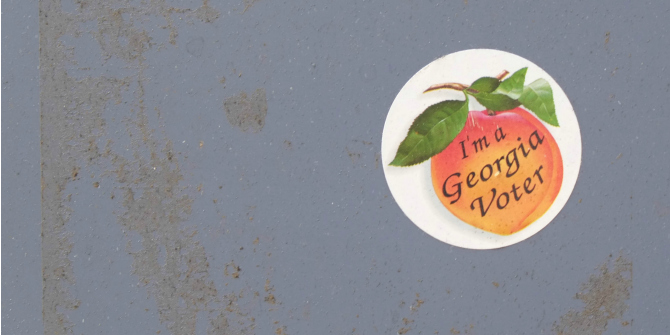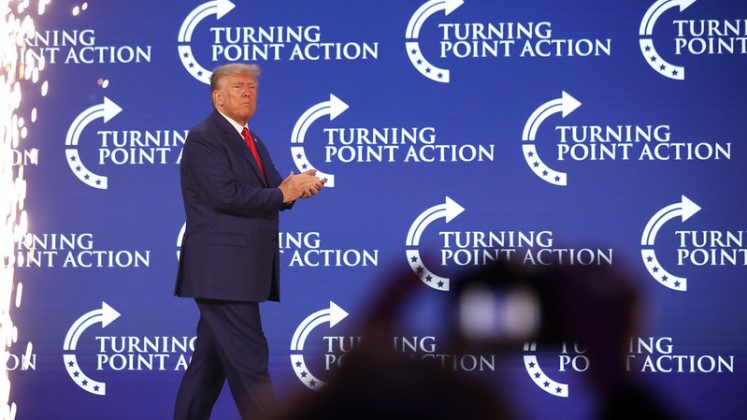



 Voter turnout can be an important indicator of an electorate’s level of political engagement, and the strengths and weaknesses of the electoral system more generally. In new research Alexandre Fortier-Chouinard, Marc André Bodet, François Gélineau, Justin Savoie and Mathieu Ouimet explore the effectiveness of “get-out-the-vote” (GOTV) interventions in affecting voter turnout during primary elections. They find that while such techniques are effective in low-turnout primary elections, they might not have a similar influence in general elections, or contests considered by voters to be less important. Given that primaries tend to attract fewer voters than general elections, understanding the use of GOTV interventions might help create a more robust democracy.
Voter turnout can be an important indicator of an electorate’s level of political engagement, and the strengths and weaknesses of the electoral system more generally. In new research Alexandre Fortier-Chouinard, Marc André Bodet, François Gélineau, Justin Savoie and Mathieu Ouimet explore the effectiveness of “get-out-the-vote” (GOTV) interventions in affecting voter turnout during primary elections. They find that while such techniques are effective in low-turnout primary elections, they might not have a similar influence in general elections, or contests considered by voters to be less important. Given that primaries tend to attract fewer voters than general elections, understanding the use of GOTV interventions might help create a more robust democracy.
Strategies to increase voting
Primary elections generally attract less attention and fewer voters than general elections. In various studies, researchers have tried to boost voters’ participation in primary and general elections using get-out-the-vote (GOTV) interventions. These interventions use different types of messages, from simple reminders to vote to messages which rely on social pressure to encourage voter turnout, and can be communicated through different means, including mail, phone, and canvassing.
To test the effectiveness of mail GOTV messages, we aggregated the results of 125 experiments and found that they boost voter turnout by 0.5-4 percentage points in primary elections. Therefore, sending a mail message to a voter reminding them about an upcoming primary election increases their probability of voting. These interventions seem to work! On the other hand, we did not find that mail GOTV messages significantly increased voter turnout in general elections.

Jpesch95, CC BY-SA 4.0, via Wikimedia Commons
Effective interventions – “duty” and neighborhood turnout information
Is there a difference between the effectiveness of simple mail reminders to vote and of high social pressure messages in primary and general elections? Yes. Voters who receive a short letter which simply reminds them about the upcoming election are not significantly more likely to vote than voters which do not receive any letter, except in very low-turnout primary elections, where there is a slight increase. However, adding social pressure to the message increases its effectiveness. Mail messages which emphasize the idea that citizens have a “duty to vote” in the upcoming election give a small boost to voter turnout.
Even more significantly, though, American researchers have developed a more successful intervention which puts significant social pressure on voters by sending them a letter telling them whether their neighbors voted or abstained in the past election and promising to send updated information after the election. Since voters are informed about their neighbors’ past turnout, they can be pressured to vote themselves to avoid their neighbors being informed by mail that they did not vote in the past election. In low-turnout primary election settings, this type of mail message increases voter turnout by 3.8 percentage points.
Some researchers have argued in the past that interventions could be more effective in high turnout areas since their voters are more motivated. While we do not have the data to test this hypothesis specifically, this appears unlikely to us. Looking at Figure 1, we see that mail GOTV interventions in elections where turnout is already high generally have small effects. To the contrary, in elections with low voter turnout, these interventions are quite successful, with the shaded area representing a 95 percent confidence range. This figure includes both primary and general elections. Further analysis suggests that GOTV interventions can work in general elections when voter turnout is very low, but messages need to include some level of social pressure – like sharing neighbors’ voting records.
Figure 1 – Effect of Receiving a Mail GOTV Message on Voter Turnout

GOTV Interventions are effective in low-turnout primary elections
Since GOTV mail interventions increase voter turnout in low-turnout primary elections, we could think that they will be more successful in low-importance elections more generally. Researchers have studied GOTV interventions’ success in many contexts and have defined election salience in various ways. Other than races with low voter participation and primary elections, researchers have considered two other types of “unimportant” elections which receive little attention: local and municipal elections, and uncompetitive elections where the margin of victory is large. In both cases, we do not find that mail GOTV interventions increase voter turnout.
Therefore, we urge for caution and argue for further clarifications when referring to the effect of the importance of an election on voter turnout. Researchers have used the expression “election salience” to talk about phenomena — election type, voter turnout, competitiveness, and so on — that not only are different in nature but also have different relationships with GOTV intervention success. Low-turnout primary elections can be successful contexts for encouraging voters to go to the polls through mail messages. In other contexts, deemed important or not, however, the effect of mail reminders can be small or absent.
Voter turnout, or the proportion of registered voters who cast their vote during elections, is one of the most common indicators of political participation in democratic societies. It is often said that the higher the voter turnout, the healthier the democracy. Yet, turnout has been declining globally since the 1980s, prompting researchers to develop methods for increasing voter turnout, such as GOTV interventions. Since 2018, the United States has seen a general increase in voter turnout. While the United States calculates voter turnout in a slightly different way than most countries due to different voter registration protocols, the share of voters casting a ballot remains low relative to other countries. GOTV mail interventions can be helpful for increasing voter turnout when it is already low, and researchers select messages which involve some degree of social pressure.
- This article is based on the paper, ‘Getting the Message Out: Why Mail Delivered GOTV Interventions Succeed or Fail’, in PS: Political Science & Politics.
- Please read our comments policy before commenting.
- Note: This article gives the views of the author, and not the position of USAPP– American Politics and Policy, nor of the London School of Economics.
- Shortened URL for this post: https://bit.ly/3yK4p0Y






